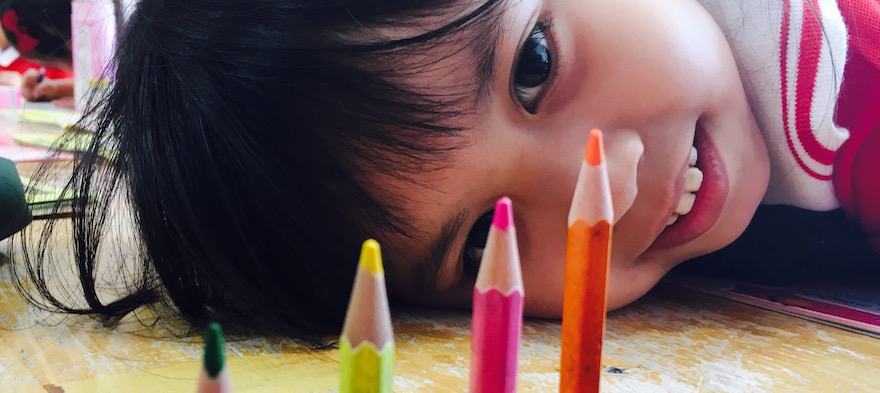
Apr 12, 2019 12:00:00 AM
Trauma is a silent, but very prevalent problem in the classrooms of today. In fact, recent reports by the Substance Abuse and Mental Health Services Administration (SAMHSA), suggest that more than 66 percent of children have experienced one or more traumatic event by the time they reach the age of 16.
These traumatic events can include everything from psychological, physical or sexual abuse to serious accidents or life-threatening illness, community or school violence to witnessing or experiencing domestic violence.
Not only does experiencing this trauma impact behavior, but it also hampers a student’s ability to learn effectively.
Unfortunately, certain populations are at higher risk for experiencing trauma than others. Children who come from families that face economic stress, homeless youth, children of military and veteran families, those with intellectual and developmental disabilities and LGBTQ youth are all at a higher risk of experiencing trauma than their peers.
Race is also a strong indicator of whether a child will face a potentially traumatic adverse childhood experience. White and Asian children have the lowest rates of traumatic childhood experiences, while Black and Hispanic children tend to have the highest.
Ideally, the circumstances of one's birth shouldn't affect a child’s opportunity to succeed, both inside and outside the classroom. In this regard, [pullquote position="right"]teachers play a huge role in helping a child through trauma. [/pullquote]
The first step is to recognize the signs of trauma in children. According to experts at Concordia University, these signs can include being easily startled, sudden changes in behavior, excessive temper or aggressive behavior, development of new fears, difficulty focusing and an inability to trust or make new friends. Once their trauma has been identified, educators can adapt their approaches to help the student in question to cope and thrive in the classroom.
Though it’s no easy feat, and there is no one-size-fits-all solution to the problem at hand, there are strategies teachers and administrators can use to help children work through their trauma.
First, it’s important that children are in an environment that makes them feel secure. This can involve creating smooth transitions between activities so as to avoid potential triggers that put children on edge. It’s also important that teachers employ a kind of teaching where accomplishments are celebrated publicly, and critiques happen privately. Children who have experienced repeated trauma are often sensitive to being reprimanded, so sensitivity in this area is particularly important. Furthermore, implementing mindfulness in the classroom can also teach students new coping skills that will help them not only in the classroom, but in real life as well. As Joyce Dorado, Ph.D. notes, “Mindfulness is a fabulous tool for counteracting the impact of trauma.”
Furthermore, it’s important that students are made to feel safe and accepted in their classroom.
“Kids who have experienced trauma have difficulty learning unless they feel safe and supported,” says Caelan Kuban Soma of the National Institute for Trauma and Loss in Children.
“The more the teacher can do to make the child less anxious and have the child focus on the task at hand, the better the performance you are going to see out of that child. There is a direct connection between lowering stress and academic outcomes.”
Since stress is one of the biggest inhibitors to learning, [pullquote position="left"]educators must focus on reducing anxiety for children who have experienced trauma.[/pullquote] By promoting empathy and mutual respect in the classroom, children are able to holistically participate in their classroom environments, and have a much better chance of breaking out of the cycle of abuse and trauma they’ve endured.
Educators play an important role in shaping a child’s life, and therefore should be adequately equipped to help children who have faced trauma. However, in doing so, educators must not overlook their own mental and emotional well-being. After all, it is impossible to help others who are struggling without looking after oneself first.
Jori Hamilton is a writer and journalist from the Pacific Northwest who covers social justice issues, health care and politics. You can follow her work on Twitter @HamiltonJori, through her portfolio or through her LinkedIn.
Few issues in education spark more tension and debate than standardized testing. Are they a tool for equity or a burden on students? A necessary check on school systems or a flawed measure of...
Charter schools are public schools with a purpose. Operating independently from traditional school districts, they're tuition-free, open to all students, and publicly funded—but with more flexibility...
Despite the benefits of a diverse teaching force, prospective teachers of color fall out of our leaky preparation pipeline at every stage: preparation, hiring, induction, and retention. Here’s what...
Ed Post is the flagship website platform of brightbeam, a 501(c3) network of education activists and influencers demanding a better education and a brighter future for every child.
© 2020-2025 brightbeam. All rights reserved.
Leave a Comment